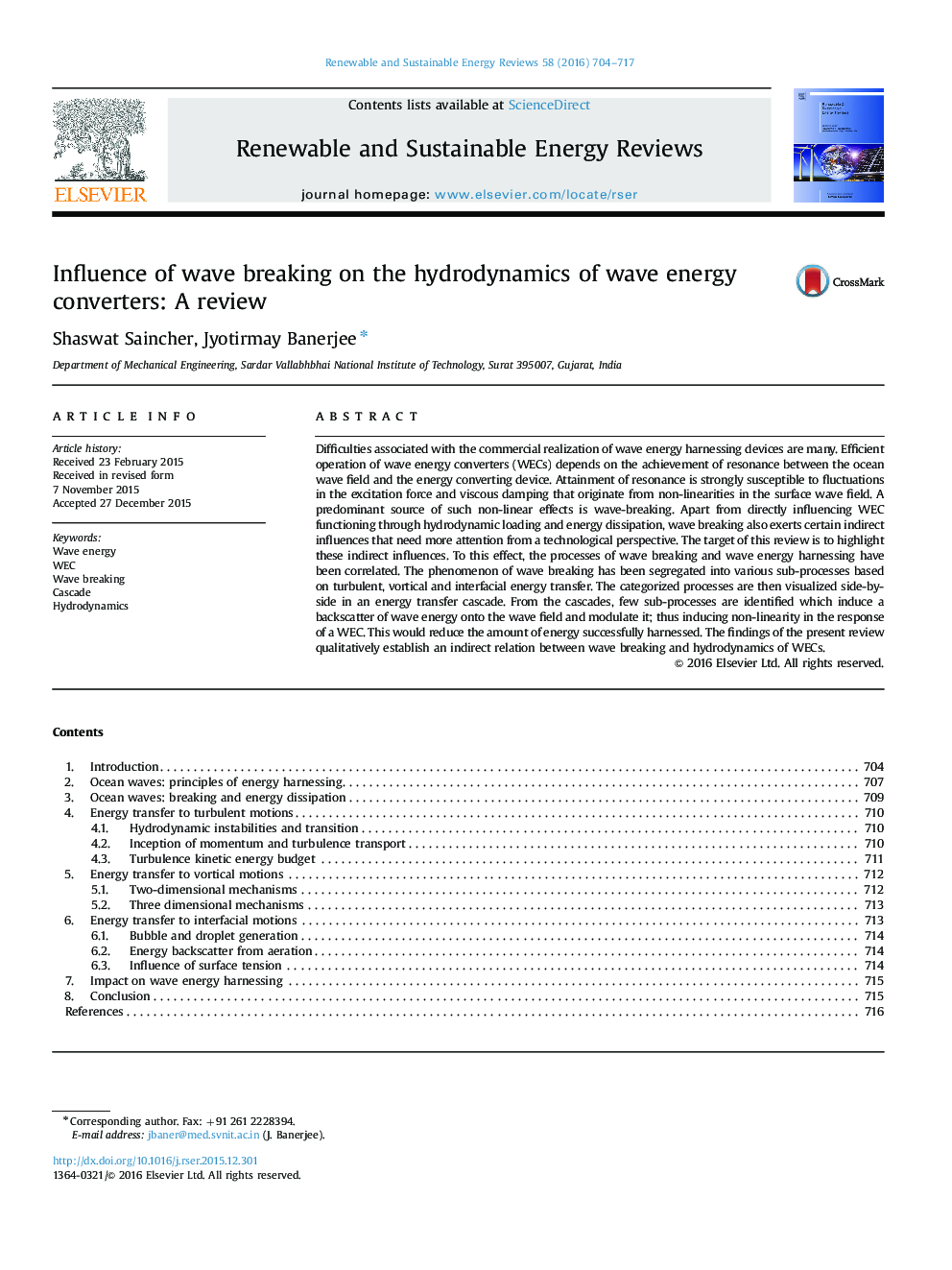| Article ID | Journal | Published Year | Pages | File Type |
|---|---|---|---|---|
| 8114240 | Renewable and Sustainable Energy Reviews | 2016 | 14 Pages |
Abstract
Difficulties associated with the commercial realization of wave energy harnessing devices are many. Efficient operation of wave energy converters (WECs) depends on the achievement of resonance between the ocean wave field and the energy converting device. Attainment of resonance is strongly susceptible to fluctuations in the excitation force and viscous damping that originate from non-linearities in the surface wave field. A predominant source of such non-linear effects is wave-breaking. Apart from directly influencing WEC functioning through hydrodynamic loading and energy dissipation, wave breaking also exerts certain indirect influences that need more attention from a technological perspective. The target of this review is to highlight these indirect influences. To this effect, the processes of wave breaking and wave energy harnessing have been correlated. The phenomenon of wave breaking has been segregated into various sub-processes based on turbulent, vortical and interfacial energy transfer. The categorized processes are then visualized side-by-side in an energy transfer cascade. From the cascades, few sub-processes are identified which induce a backscatter of wave energy onto the wave field and modulate it; thus inducing non-linearity in the response of a WEC. This would reduce the amount of energy successfully harnessed. The findings of the present review qualitatively establish an indirect relation between wave breaking and hydrodynamics of WECs.
Related Topics
Physical Sciences and Engineering
Energy
Renewable Energy, Sustainability and the Environment
Authors
Shaswat Saincher, Jyotirmay Banerjee,
